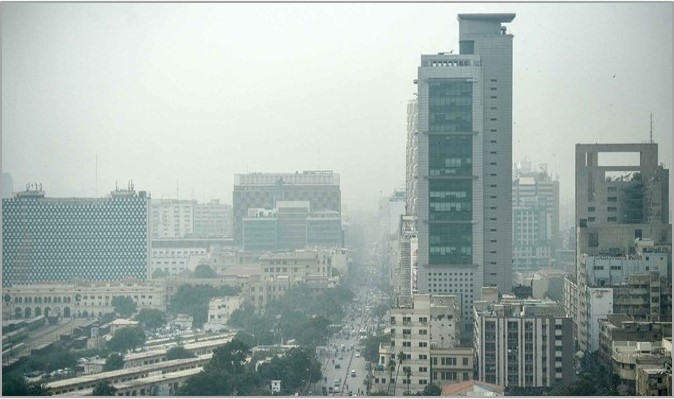Urban development has been haphazard overall in Pakistan. However, unchecked high rises and unmanaged vertical construction in Karachi have made the megacity a jungle of concrete. And, environmental impacts of this chaotic development now started to affect human living in terms of poor air quality index in the metropolitan.
A recent study titled “Sand and Dust Storm Risk Assessment in Asia and the Pacific”, discloses the state of quality of air in Pakistan is hazardously poor because of high dust deposition in the atmosphere. It ranks Pakistan as the 2nd most affected nation in Asia and the Pacific region where population is exposed to poor air quality. It is, therefore, important to juxtapose or examine the study keeping in view urban development specially the impacts of high rises and vertical construction in Karachi.
“Sand and Dust Storm Risk Assessment in Asia and the Pacific”
Some bullet points of the report are;
- Cities in southwestern parts of Asia have the highest exposure to sand and dust storms, which make a significant contribution to poor air quality in Karachi, Lahore and Delhi, where nearly 60 million people experienced more than 170 dusty days a year in 2019.
- In proportion terms, more than 80% of the entire populations of Turkmenistan, Pakistan, Uzbekistan and Iran are exposed to medium and high levels of poor air quality due to sand and dust storms.
- The impact of sand and dust storms on the generation of electricity by solar power plants in Pakistan, measured in economic terms, has been estimated to be $37 million per year.
The study also reveals the poor air quality have also disastrous impacts on economy specially agriculture and aviation sector.
- Nearly 49% areas of farmland are affected by dust deposition in Pakistan. Much of this dust is characterized by a high salt content, which typically makes the dust toxic to plants.
- In the aviation sector, the exposure of aircraft engines to dust particles is a considerable risk on flight paths. Therefore flights to and from airports on the Arabian Peninsula, Pakistan, India, and China are most affected.
- Altogether according to study some 173 million people in Pakistan are exposed to medium and high levels of poor air quality due to sand and dust storms.
High Rises impacts on Air Quality
It is generally perceived, and the study also points out that air quality is at more worsening state in urban areas of Pakistan, specially Lahore and Karachi. Smog in Lahore is a well-known environmental phenomenon which paralyzes life in the city. While in Karachi the presence of PM10 particles in the atmosphere by vehicle emissions and heat island effect due to immense existence of concrete and asphalt as well as construction debris, make air quality here poisonously unbreathable.
Air pollution refers to man-made emissions that are released into the atmosphere. Unchecked high rises in order to exploit the land with having the negative effects in the environment create new problems including increasing congestion population, environmental pollution, reduce citizen access to fresh air and sunlight. Besides they can cause undesirable intensification of wind flow in urban streets and open spaces.
Construction Activities & PM10
Diverse and big amount of construction dust from cement, concrete, silica and wood all are classified as PM10, a micro particle invisible to the naked eyes. Besides, the diesel engine exhausts from concrete plants and heavy machineries is also a large contributor to PM10, emitted at construction site. Specially diesel fumes contain sulphates and silicates that add the pollution in the atmosphere.
Poor air quality is a global health hazard, responsible for approximately 4.2 million premature deaths in 2016. Further, air pollution contributes significantly to the warming of the planet, and therefore to climate change.
By
Editorial, Infocus


